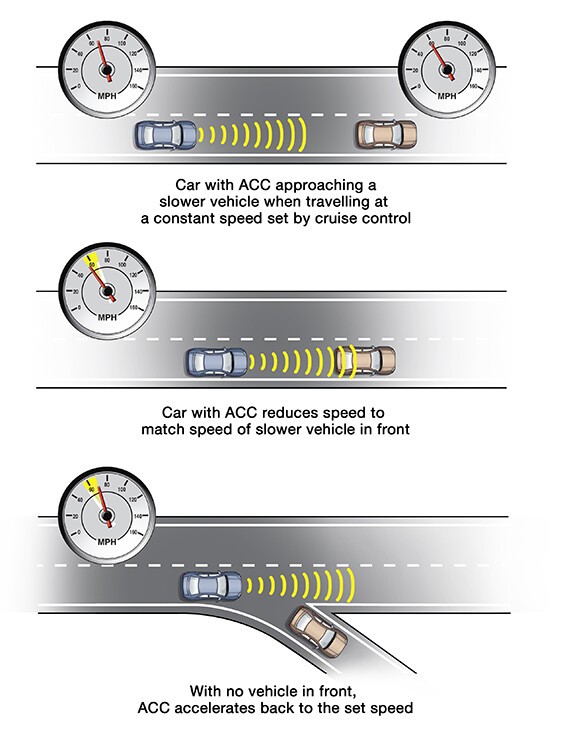Adaptive Cruise Control (ACC) is a modern enhancement of the traditional cruise control system found in vehicles. While standard cruise control maintains a constant speed set by the driver, ACC takes it a step further by intelligently adapting your car’s speed to the traffic conditions around you. In essence, ACC is designed to automatically keep a safe following distance from the vehicle ahead, making driving both more convenient and safer, especially on highways and in moderate traffic.
How to Operate Adaptive Cruise Control
The operation of Adaptive Cruise Control is generally intuitive, though specific controls can vary slightly depending on the car manufacturer and model. Typically, engaging ACC involves a few simple steps using controls located on your steering wheel.
Activating and Deactivating ACC
Most ACC systems are activated and deactivated using buttons conveniently placed on the steering wheel. These controls allow for easy engagement without taking your hands off the wheel. Importantly, drivers can always override or disengage the system instantly by pressing either the brake or accelerator pedal, ensuring you remain in full control when needed.
Setting Your Desired Speed
Setting the initial cruising speed with ACC is similar to standard cruise control. You can use dedicated ‘+/- speed’ buttons on the steering wheel to incrementally adjust your desired speed. Alternatively, you can accelerate to your preferred speed using the accelerator pedal and then engage the ACC to ‘remember’ and maintain that speed as the maximum limit. It’s worth noting that most ACC systems are designed to function effectively at speeds above approximately 25 MPH.
Adjusting Following Distance
A key feature of Adaptive Cruise Control is the ability to set a preferred following distance from the vehicle in front. This is usually adjustable through settings that offer options like ‘short,’ ‘medium,’ or ‘long’ distance. These settings correspond to the time interval between your car and the car ahead. It’s advisable to adjust this setting based on driving conditions, with a longer following distance generally recommended for most situations to provide ample reaction time.
The Technology Behind ACC: How It Works
Adaptive Cruise Control systems utilize advanced sensor technology to perceive the driving environment and react accordingly. Unlike traditional cruise control, ACC is equipped with sensors that constantly monitor the road ahead, detecting vehicles and measuring the distance and speed relative to your car.
Sensors: The Eyes of ACC
ACC systems primarily rely on two types of sensors: a distance sensor and a speed sensor. The distance sensor, often radar-based, measures the gap to the vehicle directly in front, while the speed sensor tracks your car’s speed. By processing data from these sensors, the ACC system can determine if there’s a vehicle ahead, its speed, and its distance.
Radar-Based ACC Systems: A Closer Look
Many modern ACC systems employ radar technology. These systems emit radar waves that bounce off objects in the vehicle’s path. By analyzing the reflected radar waves, the ACC system calculates the distance, direction, and relative speed of vehicles ahead. The system then predicts your car’s trajectory and assesses if any vehicles are within your set following distance. If a vehicle is detected within this range and is traveling slower than your set speed, ACC will automatically adjust your car’s speed by reducing throttle or applying brakes to maintain the chosen gap. If the vehicle ahead speeds up or changes lanes, and the path is clear, ACC will smoothly accelerate your car back to your preset speed.
In summary, Adaptive Cruise Control enhances the driving experience by automating speed adjustments to maintain a safe following distance, contributing to a more relaxed and secure journey.
